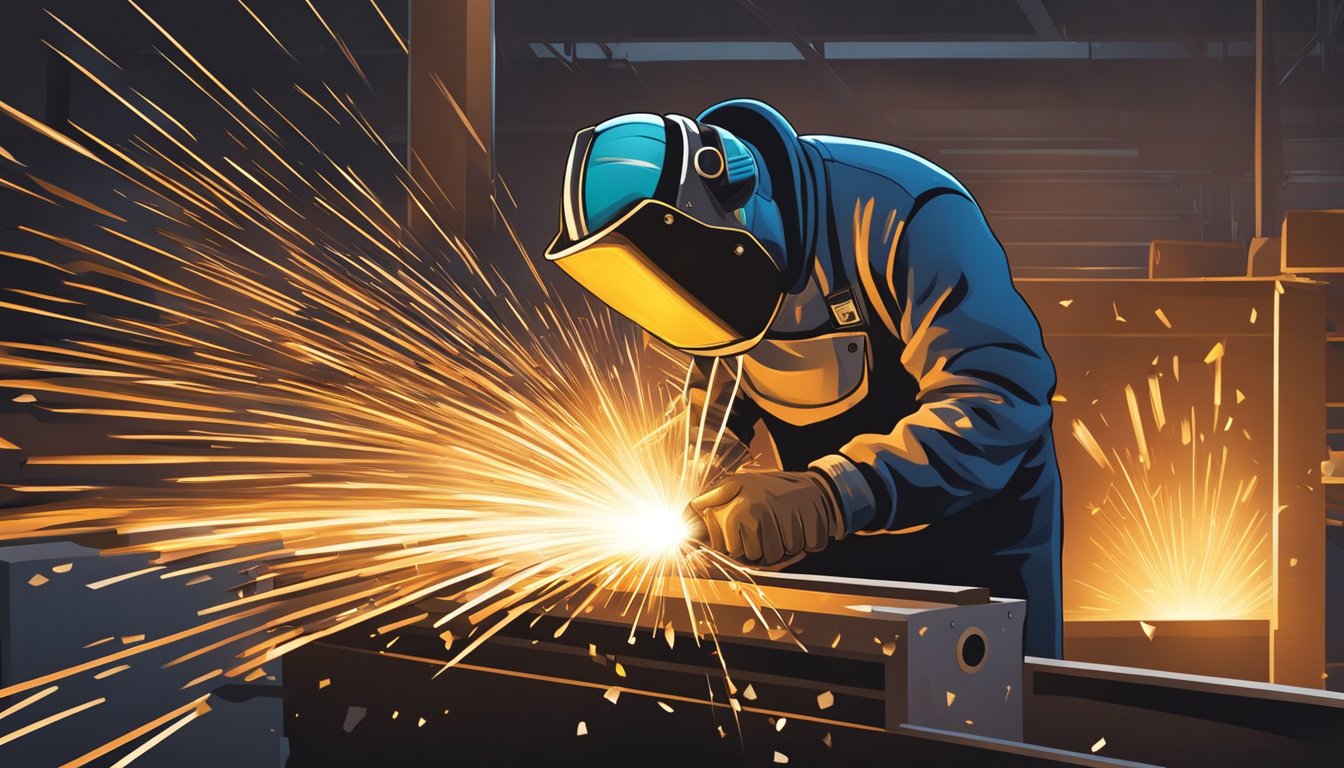Comprehending Welding WPS: Comprehensive Overview for Welders
Comprehending Welding WPS: Comprehensive Overview for Welders
Blog Article
The Ultimate Guide to Welding WPS Procedures: A Comprehensive Introduction for Welders
In the intricate globe of welding, Welding Procedure Specifications (WPS) function as the backbone of making certain high quality, consistency, and security in welding operations. Understanding the nuances of creating, implementing, and checking WPS treatments is crucial for welders aiming to raise their craft and meet sector requirements. As we look into the various parts of a WPS and explore the ins and outs of credentials and qualification, we will reveal the important function these procedures play in the realm of welding. Let's start a journey to decipher the complexities and relevance of WPS treatments in welding methods.
Significance of WPS Procedures
Recognizing the significance of Welding Treatment Requirements (WPS) treatments is crucial for making sure the high quality and integrity of bonded structures. WPS procedures act as a roadmap for welders, laying out the needed actions, criteria, and materials needed to attain an audio weld. By sticking to WPS guidelines, welders can make sure uniformity in their job, resulting in structurally sound and dependable welds.
One of the primary factors why WPS procedures are necessary is their role in preserving weld high quality and integrity. Complying with the specified welding specifications and techniques laid out in the WPS helps prevent defects such as porosity, fracturing, or insufficient combination, which can compromise the stamina and durability of the weld.

Components of a WPS
A Welding Treatment Specification (WPS) normally comprises important components that information the particular demands for carrying out a weld, making certain uniformity and top quality in the welding procedure. The essential components of a WPS include vital variables such as base metals, filler steels, interpass and preheat temperature levels, welding processes, securing gases, welding positions, and post-weld heat treatment needs.
Base metals refer to the materials being joined, while filler steels are utilized to fill up the void between the base steels throughout welding. Preheat and interpass temperatures are critical for regulating the warm input and preventing problems like cracking or distortion. The welding procedure details the particular method to be utilized, whether it's gas metal arc welding (GMAW), protected metal arc welding (SMAW), or an additional method. Protecting gases protect the weld pool from atmospheric contamination. Welding placements specify the orientations in which welding can be carried out. Post-weld warmth treatment might be required to ease stress and anxieties and improve the weld's homes. A complete understanding of these elements is critical for developing a thorough and efficient WPS.

Qualification and Accreditation
Having developed the vital parts of a Welding Procedure Specification (WPS), the focus currently changes towards the crucial facets of qualification and right here accreditation in welding techniques.

Accreditation, on the other hand, is the formal acknowledgment of a welder's certifications image source by an appropriate qualification body or organization. Welding certifications are usually based on the particular welding processes, materials, and placements a welder is certified to deal with. Holding a legitimate welding certification demonstrates that a welder fulfills sector criteria and is competent to do welding jobs to the needed specs.
Creating a WPS
To establish a Welding Procedure Specification (WPS) that satisfies industry criteria, mindful consideration of welding procedures, products, and operational criteria is vital (welding WPS). The initial step in creating a WPS is to identify the welding process to be used, such as gas steel arc welding (GMAW) or shielded metal arc welding (SMAW) When the welding process is identified, the following vital aspect is selecting the ideal materials, thinking about aspects like base steel type, thickness, and joint style. Operational criteria such as welding existing, voltage, traveling speed, and shielding gas structure must additionally be meticulously specified in the WPS.

Implementing and Monitoring WPS
Upon settling the thorough Welding Treatment Specification (WPS) that carefully details welding procedures, materials, functional parameters, and high quality assurance procedures, the emphasis shifts to effectively executing and keeping an eye on the well-known treatments. Application entails ensuring that all welders entailed in the job are familiar with the WPS and follow it meticulously throughout the welding procedure. Effective implementation and tracking of the WPS are vital for making sure the integrity, stamina, and safety of the welded joints, inevitably contributing to the total success of the welding task.
Conclusion
To conclude, understanding and complying with Welding Treatment Specs (WPS) is crucial for welders to make certain high quality, consistency, and safety and security in their job. By knowing the check my reference elements of a WPS, acquiring correct certifications and accreditations, developing in-depth treatments, and executing and monitoring them efficiently, welders can enhance their skills and efficiency in welding techniques. Abiding by WPS procedures is vital for generating premium welds and conference market requirements.
In the intricate globe of welding, Welding Treatment Specifications (WPS) serve as the foundation of guaranteeing quality, uniformity, and safety in welding procedures. The welding process describes the certain technique to be made use of, whether it's gas metal arc welding (GMAW), secured metal arc welding (SMAW), or another technique.To establish a Welding Treatment Requirements (WPS) that fulfills industry criteria, mindful consideration of welding processes, materials, and operational criteria is important. The first action in producing a WPS is to determine the welding procedure to be made use of, such as gas steel arc welding (GMAW) or secured metal arc welding (SMAW)Upon finalizing the comprehensive Welding Procedure Requirements (WPS) that meticulously details welding procedures, materials, functional parameters, and top quality assurance measures, the focus moves to effectively applying and keeping track of the recognized treatments.
Report this page